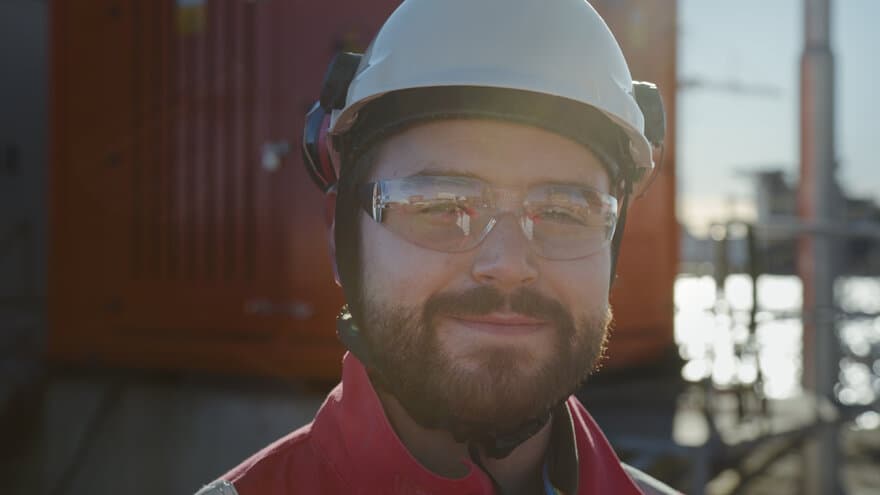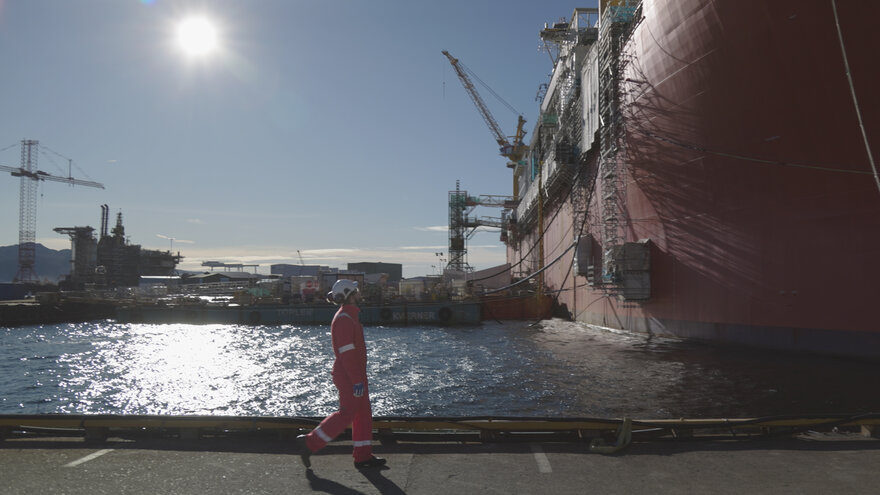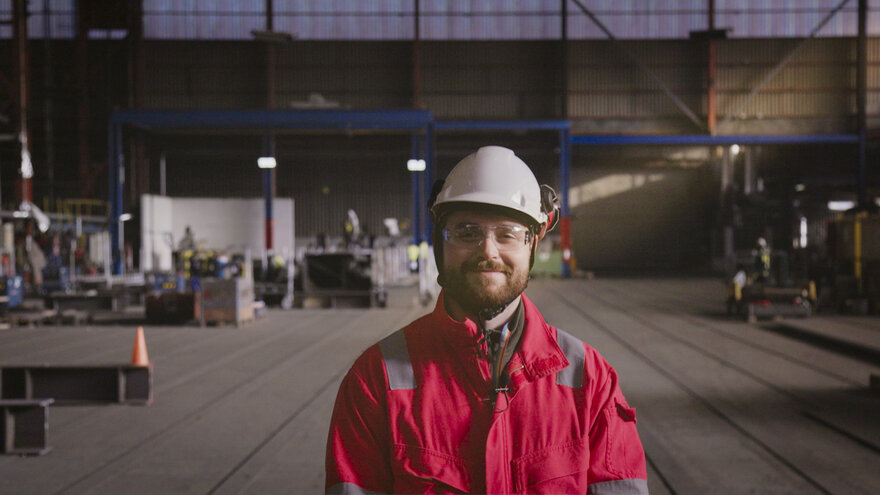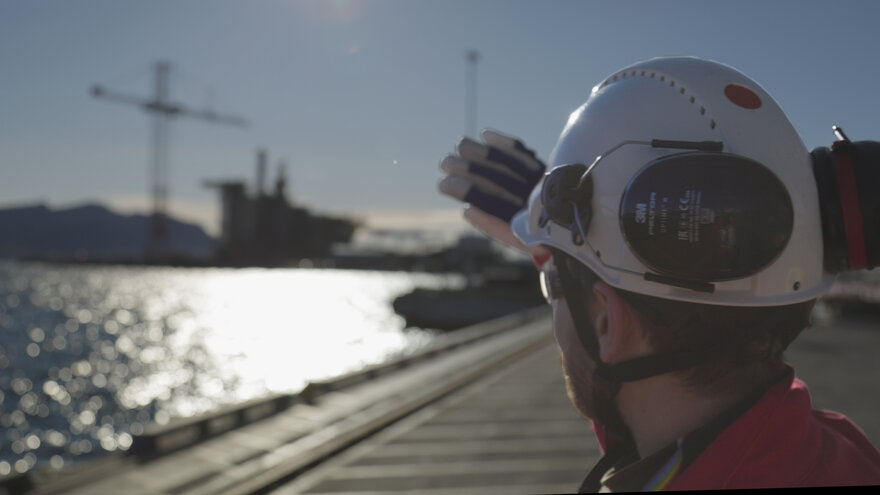Former NMBU student aims to find a solution for fish welfare and overloaded fjords at Aker Solutions.
Diverging from the career paths of many childhood friends, Markus Antonsen held a conviction that the future extended beyond the realms of oil and gas. He went a different direction aiming towards a secure and financially rewarding profession.
Eventually this led to a master's degree in aquaculture at NMBU and a position in Norway's largest company within energy services.
He secured the job before completing his master's degree. Now, he works as an Aquaculture System Engineer in an ambitious aquaculture department at Aker Solutions. They are working on moving the aquaculture industry to the open sea and are eager to succeed.
Transition from old to new technology
We feel like ants as we walk around the shipyard in Stord amidst large machines and enormous metal parts being moved and welded together. We accompany Markus on his first visit to the shipyard.
Behind us lies Equinor's 313 meter long and 55 meter wide Johan Castberg ship, named after the Johan Castberg field in the Barents Sea. The floating production ship can store 1.1 million barrels of oil, and currently, around 2000 people are employed daily to complete the project.
On the other side of the dock, they are working to extract metal from old oil platforms for recycling, and in the opposite direction, a large transformer is being prepared for an offshore wind farm to be established outside off New York.
"This highlights some of the transitions the company is undergoing. Here we can observe examples of the shift from old to new technology," Markus explains with enthusiasm.
Ensuring fish health in a world-leading professional environment
Markus and his engineering colleagues constitute a world-leading professional environment in offshore aquaculture.
Like the equipment and units being handled around us at the Stord shipyard, the dimensions of their design are enormous.
The metal structures they develop are intended to float, be connected to fish nets, and withstand waves as high as 30 meters. In these production units, the fish must also thrive, and this is where Markus's expertise comes into play.
"I work on all aspects of fish technology and ensure that fish health is maintained. I design, among other things, efficient feeding systems," Markus explains.
Need for NMBU expertise to succeed in green transition
His current tasks are a natural extension of the master's thesis he wrote in collaboration with his current employer. As part of his thesis, he designed a feeding system for one of the company's concepts.
"Aker Solutions has truly recognized the expertise available at NMBU. They see that this knowledge is necessary to succeed in a sustainable transition."
Markus Antonsen.
Fjords are overloaded – hoping for healthier fish
Now, he is part of the pioneering work to move Norway's second-largest export industry to the open sea.
"For me, the aquaculture industry has been like agriculture before we invented the plow. It was first when we invented the plow that we truly managed to exploit the potential in the fields, and that's what we're working on now – plowing entirely new areas, farming salmon far out at sea," Markus explains.
In a typical conventional aquaculture facility, there is more fish swimming than there are wild salmon in the entire country of Norway. The production units that are being designed can have double to quadruple the capacity of a fjord facility.
"The capacity in the fjords has reached its limits. We need to find new ways to produce without overloading the environment. Wild salmon is only in the fjord for a fraction of its life. It belongs out at sea. By moving production to the open sea, we will hopefully have healthier fish and be less burdensome for wild salmon," he explains.
Markus Antonsen.
Advantages of offshore fish farming
• Salmon lice do not thrive more than ten meters below the sea surface. Submerged cages will therefore have a significantly lower likelihood of salmon lice.
• Ocean currents provide constant exercise for the fish, not just during ebb and flow as in the fjords.
• Infections and salmon lice are not transported between facilities by tidal currents.
• Constant ocean currents moving in predictable directions allow facilities to be placed smarter to reduce the transmission of infections from one place to another.



